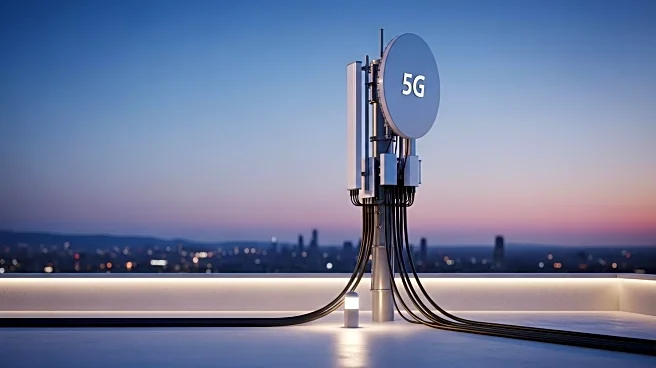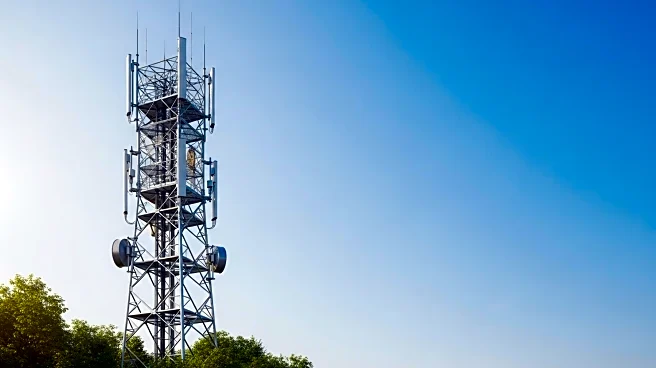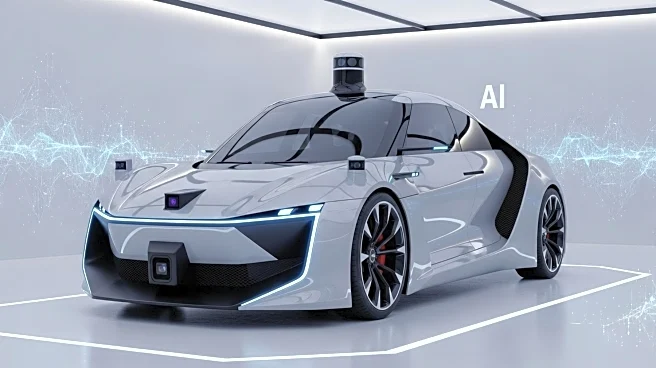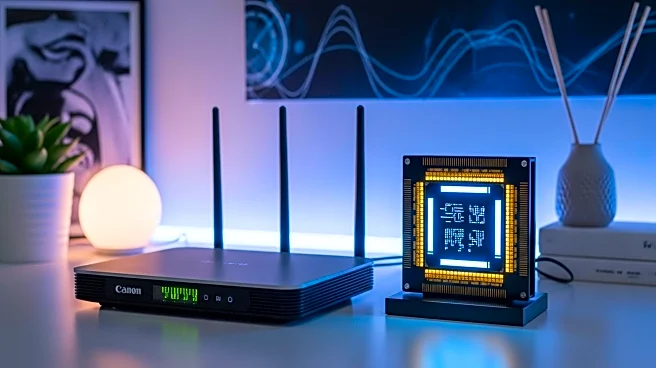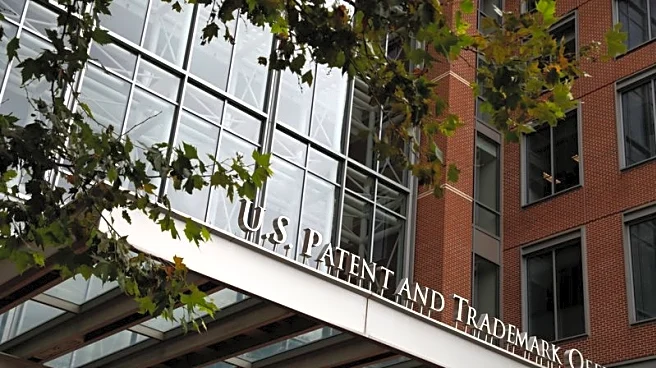What is the story about?
What's Happening?
Charter Communications is advancing its initiative to run 5G traffic on its hybrid fiber/coax (HFC) network, aiming to create dense supercells for enhanced wireless coverage. The project, initially known as 'New Radio over Coax' (NRoC), is now referred to as 'fiber-powered DAS,' which stands for distributed antenna system. Charter has collaborated with CableLabs, Rogers Communications, and various vendors to develop this technology. The system was demonstrated at the SCTE TechExpo in Washington, DC, showcasing its ability to funnel CBRS traffic onto the HFC network using a Nokia 5G radio unit. This traffic is then relayed through a Technetix tap capable of supporting up to 4GHz spectrum to a CBRS-capable DAS antenna. Charter plans to test this system in Denver and aims to trial it in some of its buildings by the end of the year.
Why It's Important?
The development of 5G-over-HFC technology by Charter Communications could significantly impact the telecommunications industry by expanding wireless coverage and creating one of the densest 5G networks. This innovation allows for more efficient use of existing infrastructure, potentially reducing costs and improving service delivery in high-density areas. The ability to dynamically adjust capacity between upstream and downstream data flows offers flexibility to meet changing data demands. If successful, this technology could set a precedent for other companies to follow, enhancing competition and innovation in the sector. It also highlights the potential for existing cable networks to evolve into more versatile spectrum networks, accommodating both DOCSIS and 5G traffic.
What's Next?
Charter Communications plans to conduct field tests of the fiber-powered DAS system later this year, with trials expected in Denver. The company is engaging with additional suppliers to develop an industry-wide ecosystem for this technology. As the system operates at frequencies above traditional cable services, there are plans to expand HFC capabilities to 3GHz and possibly 6GHz. This expansion could transform the current DOCSIS network into a more agnostic spectrum network. Additionally, InCoax is exploring the use of 5G millimeter wave signals on in-building coax, targeting the multiple-dwelling unit market, which could further enhance the application of 5G technology in residential settings.
Beyond the Headlines
The integration of 5G technology into existing HFC networks raises important considerations regarding spectrum management and infrastructure adaptation. As the telecommunications industry moves towards more versatile networks, ethical and regulatory challenges may arise, particularly concerning data privacy and network security. The shift towards using existing infrastructure for new technologies also underscores the importance of innovation in overcoming physical limitations, such as millimeter wave's inability to penetrate walls. This development could lead to long-term shifts in how telecommunications networks are designed and operated, potentially influencing global standards and practices.
AI Generated Content
Do you find this article useful?
